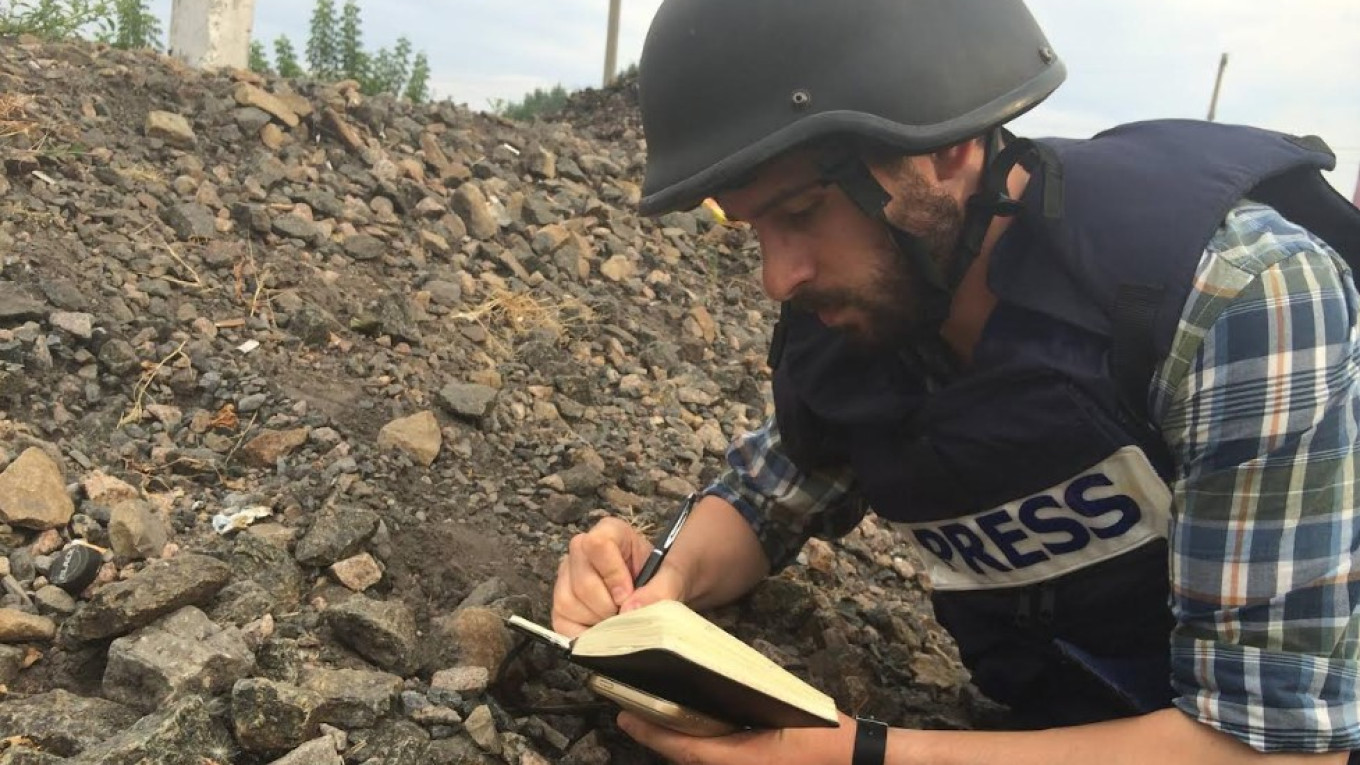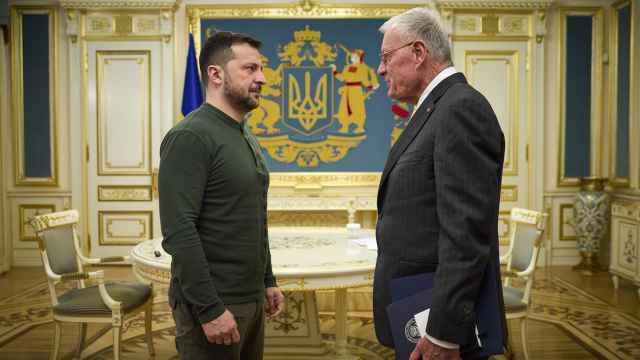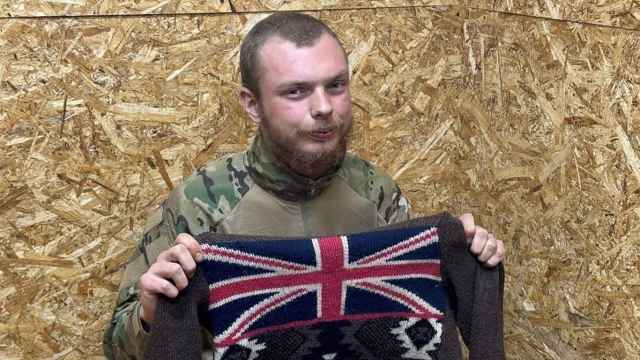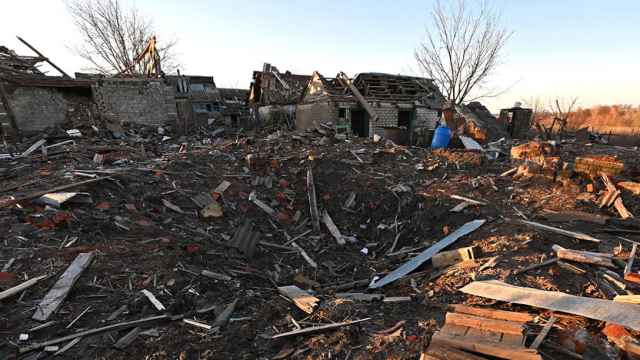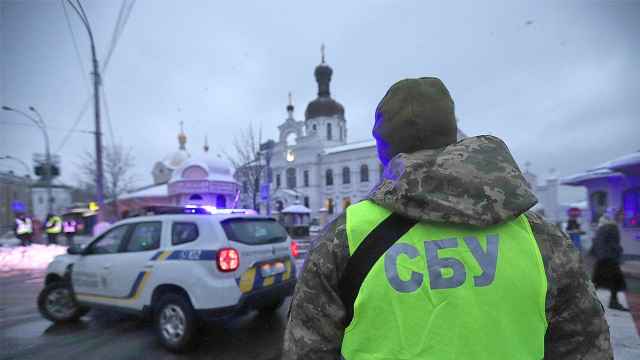In 2010, when 25-year-old Christopher Miller arrived in the eastern Ukrainian town of Bakhmut, then known as Artemivsk, he knew nothing about the country that was his U.S. Peace Corps posting.
Fresh from a stint as a local journalist in Oregon, the young American found himself in a newly independent country that was struggling to find its identity, with a people part of both east and west. Miller's early encounters with locals in Bakhmut reveal that many of the town's residents, initially suspicious of him due to his constant smiling, were as disenchanted with Kyiv as they were with Moscow.
In these opening chapters of Christopher Miller’s new book “The War Came to Us,” flash forwards remind the reader that these early political tensions clouding Bakhmut’s idyllic landscapes and amicable people would one day transform the town into the site of rebellion in 2014, and eventually, in 2022, make it synonymous with one of the bloodiest and destructive battles of Russia’s war.
The book is divided into three parts: Miller’s arrival in Ukraine and his Peace Corps years, the 2013-14 Revolution of Dignity and annexation of Crimea, and the full-scale invasion in 2022. Each of these sections is composed of vignettes that portray life in various regions of Ukraine. These chapters also trace Miller’s personal journey as a journalist, from a greenhorn with little knowledge of Ukraine’s political scene, to a junior reporter at the Kyiv Post, where he finds himself bribed and threatened by black-clad figures after breaking his first major scoop, to his current role as a correspondent at the The Financial Times.
For the last decade, Miller has been at the center of reporting in Ukraine, and this experience shines through in his book. The stories that form the backstory of the current war is testament to this. Through his sensitive reporting, he provides insights into the political disillusionment, grassroots movements, militias, Euromaidan protests, and annexation of Crimea that came before Russia’s full-scale invasion.
He meets with people from all sides of the political spectrum: pro-Ukrainian, pro-Russian, those with no strong political affiliations, warmongers and peace advocates. He does all this without caricature or stereotype. Indeed, the pro-Ukrainians are not always the good guys, and the pro-Russians are not unequivocally villains.
Miller lets his readers watch in disbelief as the bed-ridden Anatoliy Kryvonozhko, head of Ukraine’s Central Air Command who is ill with Covid, tears an IV from his arm upon hearing that Russia had invaded his country: “I was cured of coronavirus in that moment,” he tells Miller. They smile when Miller finds Andriy Khlyvnyuk, one of Ukraine’s best-known popstars, carrying an assault rifle on the front line instead of touring America. They cry beside Volodymyr Barchuk as he buries his 25-year-old son, Serhiy, who had been tortured and then murdered by Russian invaders: “Barbarians!” he cries out. “He was my boy. He did nothing to them. He wasn’t a threat.”
Miller does not play the role of the historian and analyst here; he does what a veteran journalist does best — he allows the people to speak.
Indeed, the “us” in Miller’s title is not Ukrainians in the abstract, nor the diplomats and decision-makers in Kyiv. Rather it is the individual everyday Ukrainians that captivated him and drew him to the country back in 2010. It is their story that Miller recounts, one that is filled with idiosyncrasies, disputes, passion, and sadness — but not without humor — and one that continues to enthrall him today.
"The War Came To Us: Life and Death in Ukraine"
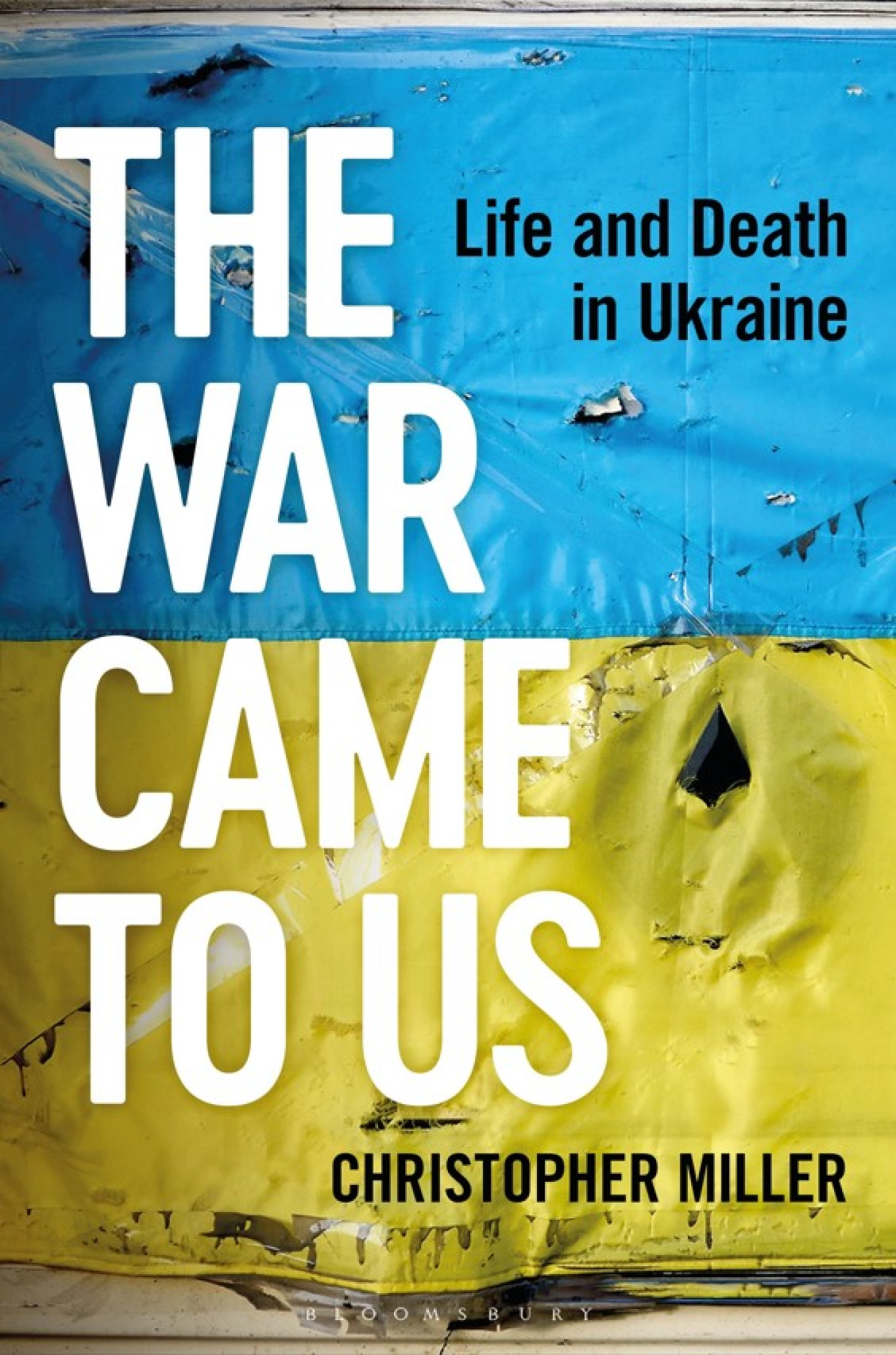
From Chapter Five: Euromaidan
Kyiv, November 2013
“Slava Ukraini!”
In the early mornings, from the elevated streets of Old Kyiv, you could see Ukraine’s revolutionaries, dressed in camouflage and military green, funnel down to the Maidan, their orange construction helmets and blue-and-yellow flags in tow. As Ukrainians from across the country streamed into central Kyiv, the statue-studded Maidan began to resemble a bizarre cross between a Renaissance fair and a twentieth-century war re-enactment. People were arriving by the thousands in the snow and bone-chilling cold to join thousands of others already on the square and central Khreshchatyk Street. Many had quit their jobs to be there or took a leave of absence or shifted their work schedules to ensure they could attend the big rallies, particularly the regular Sunday ones that always had turnouts in the hundreds of thousands, maybe even a million a time or two. People hopped charter buses, carpooled and hitchhiked to the capital, while taxi drivers offered free rides for protesters around Kyiv to the Maidan. Veterans of the Orange Revolution, experiencing a sense of déjà vu, couldn’t get there fast enough. Grandparents came with their children and grandchildren. Couples arrived together to do their bit. It was a family affair. Illustrating this point, a meme began circulating that showed a mother wearing an apron and standing on her toes as she adjusts the black-and-red face mask of her revolutionary son dressed in black and carrying a Ukrainian flag over his shoulder. A lunchbox, apple, and thermos sat beside them, and text at the bottom of the image read, “Oh, mooom.”
A student protester I met described the make-up of the revolutionaries to me this way: “Maidan was a convergence of ages, places, experience and ideas. It was a mishmash of ideologies. There was left-wing, there was right-wing, there was center, there were green activists, there were LGBT people . . . Yanukovych had pissed off everyone. People who hated each other before were actually holding hands, fighting against the police together.”
Students made up a large and influential segment of the protesters and came from various Ukrainian universities in Kyiv and elsewhere. Born just before or right as the Soviet Union was breaking up, they were young, idealistic, and didn’t harbor any nostalgia for the “old days.” They viewed Moscow as out of date and uncool. The proliferation of the internet in the years leading up to the uprising meant they had seen what the West had to offer and how people in Europe and America lived. They filled cheap hostels, couch-surfed with friends, and crashed with perfect strangers. To lure more people to the protest, Kyiv residents began offering up spare rooms in Facebook posts. One young friend of mine and his girlfriend hosted a family of four from Ternopil, one of the major cities in western Ukraine. For nearly three months they would share a one-room flat with a mother, father, and two teenage boys. When I asked how they lived on top of each other in such a small space, my friend said it wasn’t a problem. “We have a rotation,” he said. “When we are home, they are on the Maidan. When they are home, we go to the Maidan.”
Everyone dressed in thick winter gear, military garb, and patriotic clothing: many draped themselves in national flags or tied blue-and-yellow ribbons to their arms; some wore sunflower headbands or donned traditional vyshyvanky, colorful shirts, under their coats. Dozens of tents were erected, many adorned with flags indicating the regions from which their occupants hailed – Chernihiv, Vinnytsia, Kherson, Ivano- Frankivsk, Sumy, and so on – and field kitchens and cauldrons were brought in. Convivial babushkas and Cossack-looking older men with long handlebar mustaches and oseledets hairstyles (a long tress of hair flowing from the top of an otherwise shaved head) stirred pots of hot tea, chicken bouillon, hearty borsch, and grechka (buckwheat) amid clouds of white steam. Young volunteers walked around with trays of buterbrodi (open-faced sandwiches) covered with heavy smears of butter, slices of salo (salt-cured pork fat), rubbery yellow cheese, mayonnaise, stalks of green onion, and cloves of garlic.
Doctors and nurses set up medical facilities and a mental health center with psychologists on hand. Computer programmers and other IT specialists affectionately referred to as IT-shniki devised charging and wi-fi stations powered by generators. Grizzled Afghan war veterans, or Afgantsy, with their green army helmets, organized security patrols and held self-defense courses for people who’d never fought in their lives but were now preparing for the likely possibility of going into battle against highly trained police forces. There was a clothing distribution center, a library with political, cultural, and historical literature, and an open university offering free courses. Once I walked in on a screening of The Square, the 2013 documentary about the Egyptian protests and Arab Spring two years earlier. Afterward, Ukrainians discussed what they could adopt and use here.
Someone hauled in a yellow-and-blue-painted upright piano and a classically trained musician dubbed the “piano extremist” – because he wore all-black clothing with a balaclava covering his face and a bulletproof vest – played for crowds of onlookers who were mesmerized by how his fingerless-gloved hands danced across the keys in sub-zero temperatures. Protesters hovered over barrel fires singing folk songs and twirling about to keep up morale and stay warm.
Rising from the middle of the square like a Gothic spire was the metal frame of the New Year tree that authorities had begun erecting but failed to finish before the Euromaidan protests erupted. Instead of lights and ornaments, the crowd had decorated it with the flags of Ukraine, the European Union, and EU countries, as well as signs with various protest slogans and a large poster adorned with the face of the still-imprisoned opposition politician Yulia Tymoshenko. After the violence on 1 December, some started calling it the “Christmas tree decorated with blood.”
Encircling the ever-growing encampment were makeshift barricades composed of tangled razor wire wrapped around cement flower planters, park benches, signboards, wooden pallets, tires, and myriad other objects. Anything that wasn’t bolted to the ground – and even some things that were – had been dragged here and used to fortify the perimeter. When the snow fell, the protesters gathered it in sandbags and buckets and built walls of ice that were two stories high in some places. The fortifications connected with the buildings that outlined the square, which themselves became a part of the barrier around the camp, thus transforming the Maidan into something resembling a fortress. Many of those buildings, which housed government offices, were now occupied by the protesters.
Volunteer guards worked shifts at the handful of entrances around the Maidan’s perimeter and imposed “face control” to ensure there were no undercover police, provocateurs, titushki, or drunks allowed inside. Alcohol was strictly prohibited. Generally, the Maidan camp did an impressive job of self-policing. Theft was uncommon. In a rare personal security lapse one day, I forgot my laptop bag on a chair inside a tent where I had interviewed an elderly man who had come with his son from Ternopil in the west. When I recalled this an hour later and halfway across the square, I panicked and darted back. But when I reached the tent, a man had my bag and a handwritten note that read, “Hold this for the American journalist.” The older man had assigned another man to keep an eye on it for me.
On the Maidan, everyone trusted each other. People who were perfect strangers the day before were friends the next. Many treated each other with the care and respect of a long-time confidant, or close family member.
You could always tell who had been on the Maidan. The acrid smell of smoke from the fires clung to our hair and clothes. Black soot, ash, and dirt covered any exposed skin, filled forehead creases, and got wedged deep under our fingernails. Bathing and washing never wholly got rid of the odor and the grime – but nobody really wanted it to fade. In a way, these things were badges of honor. The spirit of the Maidan was intoxicating. For some, it was spiritual. Orthodox priests dressed in ornate robes prayed over the masses from the stage as protesters whispered prayers and crossed themselves.
As the uprising progressed, the Maidan became the sort of democratic state in miniature that most of the revolutionaries on the square wanted Ukraine to be. An alliance was formed by an eclectic mix of politicians, technocrats, businesspeople, civil-society organizations, activists and artists called the Maidan People’s Union – Narodne obiednannya Maidan – to lay the groundwork for a post-revolution Ukraine, with a new government and updated constitution. Decisions were often made by consensus on the square. They outlined plans to overhaul the country’s notoriously corrupt judicial system and impose new Western-oriented economic and foreign policies.
I was now working 20 hours a day and spending most of my time on the Maidan, returning to my apartment late in the night or early morning. When I slept, which was rare, I did so with my phone on my pillow beside my head in case I got a call from someone on the square and needed to rush down. Most mornings I dragged myself out of bed around 6 a.m., strapped on my newly acquired light body armor under my puffy coat, clipped my bicycle helmet to my backpack and stuffed my gas mask inside. Then I headed back out for another long day of reporting, passing neighbors in the stairwell who had just finished an overnight guard shift on the Maidan. On the way I popped into my regular coffee shop for a double espresso. One day I noticed the cashier had put out a tip jar. A handwritten note taped to its side read: “Free coffee for revolutionaries. But we accept contributions for a democratic Ukraine without Yanukovych.” It was overflowing. All of Kyiv seemed to be on a revolutionary footing, including the baristas.
Meanwhile, the rest of the world was finally catching up to the events in Kyiv as Euromaidan protests morphed into a full-blown revolt. The administration of President Barack Obama, which had expressed “deep concern” following the brutal Berkut attack on peaceful student protesters, stepped up its rhetoric, warning Yanukovych that the United States was prepared to hit the Ukrainian government with sanctions if the violence continued. Leaders of European Union nations also threatened actions against the authorities and called for peace. In a phone call made to Yanukovych on 2 December, the European Commission President, José Manuel Barroso, said that “a peaceful and political solution is the only way for Ukraine out of the current situation.” That day the crowd on the Maidan swelled to nearly 600,000 people, making it the largest in Kyiv since the Orange Revolution.
Excerpted from “The War Came To Us” written by Christopher Miller (Bloomsbury Continuum, $28.00 / £20.00). Copyright © Christopher Miller 2023. Used by permission. All rights reserved. For more information about the book and author, see here. The book is available for purchase here in the US and here in the UK.
A Message from The Moscow Times:
Dear readers,
We are facing unprecedented challenges. Russia's Prosecutor General's Office has designated The Moscow Times as an "undesirable" organization, criminalizing our work and putting our staff at risk of prosecution. This follows our earlier unjust labeling as a "foreign agent."
These actions are direct attempts to silence independent journalism in Russia. The authorities claim our work "discredits the decisions of the Russian leadership." We see things differently: we strive to provide accurate, unbiased reporting on Russia.
We, the journalists of The Moscow Times, refuse to be silenced. But to continue our work, we need your help.
Your support, no matter how small, makes a world of difference. If you can, please support us monthly starting from just $2. It's quick to set up, and every contribution makes a significant impact.
By supporting The Moscow Times, you're defending open, independent journalism in the face of repression. Thank you for standing with us.
Remind me later.



